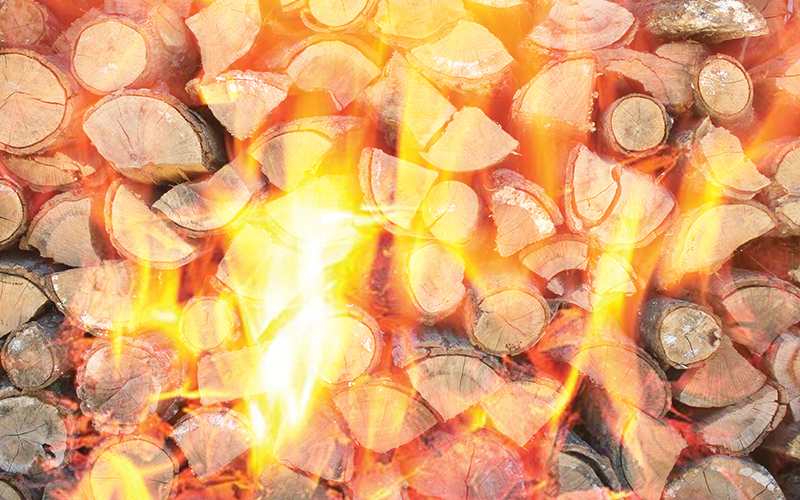Editor’s Note: This is the first part of a two-part story looking at Vermont’s ambitious wood energy goals and how heating with wood has evolved over time.
Who knew there were so many variations on heating with wood and so many environmental considerations around it as well?
The Mad River Valley Planning District recently partnered with the Central Vermont Regional Planning Commission to host a digital meeting with Emma Hanson, Fayston, who is the wood energy coordinator for the Vermont Department of Forests, Parks and Recreation.
At the December 9 meeting, Hanson explained that the state’s goal is to double the amount of people heating with some form of wood by 2035 to decrease the state’s reliance on heating oil.
Hanson, who has been in the job for 3.5 years, said humans have been heating with wood “more or less forever,” but had only really gotten good at in the last 30 years. Emma in this job in 3.5 years. She explained that forest, parks and recreation is interested in people burning wood and wood products because of forest health.
“Vermont is 76% forested and 80% of that forest is privately owned. Vermont is currently harvesting less than half of the net new growth in its forests,” she said.
The wood harvested in Vermont is high grade and low grade. High-grade wood ends up in sawmills and is used for building. Low grade wood, which is 70 to 80% of a typical harvest, is wood that is diseased or kinked or can’t be used for construction.
The low-grade wood becomes firewood or woodchips or paper, although Hanson said there is less of a demand for paper in the digital era but that there were developing markets for low-grade wood and its byproducts.
“The highest and best use of a forest is in keeping it intact. We like to see those large tracts remain intact for wildlife habitat, carbon sequestration and storage, water filtration, recreation and all of it. Burning wood in your stove actually helps keep forests as forests,” Hanson said.
She explained that wood heat supports the local economy pointing out that when a Vermonter heats with fossil fuel, 78 cents of every dollar leaves Vermont.
“Most wood fuel in Vermont is burned within 150 miles of where it is grown. Wood energy dollars support loggers, truckers and landowners and there are 350 jobs in Vermont associated with wood heat,” Hanson said.
Given Vermont’s goal of 90% renewable, clean energy by 2050, the state’s clean energy plan calls for 35% of the state’s thermal energy (heating) needs to come from wood heat by 2030.
“Why 35%? That’s based on a 2010 study to see how much low-grade wood growth there was in the state’s forests, to see what kind of a goal we could set without compromising forest health. That study has been redone and there’s another 5% net available low-grade wood growth than reported in 2010,” she said.
If Vermont reaches that goal, it will displace 40 million gallons of fossil fuel annually and Vermonters would save $120,000,000 per year on heating bills, Hanson said. Currently Vermont gets 23% of its thermal needs from wood and 43% of Vermonters heat with wood full or part time.
“Getting to that 35% would look like 38,905 pellet stoves, 10,519 residential pellet boilers, 2,574 commercial pellet boilers, 221 commercial woodchip systems/boilers,” Hanson said.
Tune in next week for Part 2 of this story in which wood-burning stoves, pellet stove, boilers and their efficiency and costs as well as incentives will be covered. For those who can’t wait that long, here is link to the meeting:
https://transcripts.gotomeeting.com/#/s/77fc5cc25c892a92c9c50b1bb40a073b34580d4535735264eb10a868f72e5dc6.






